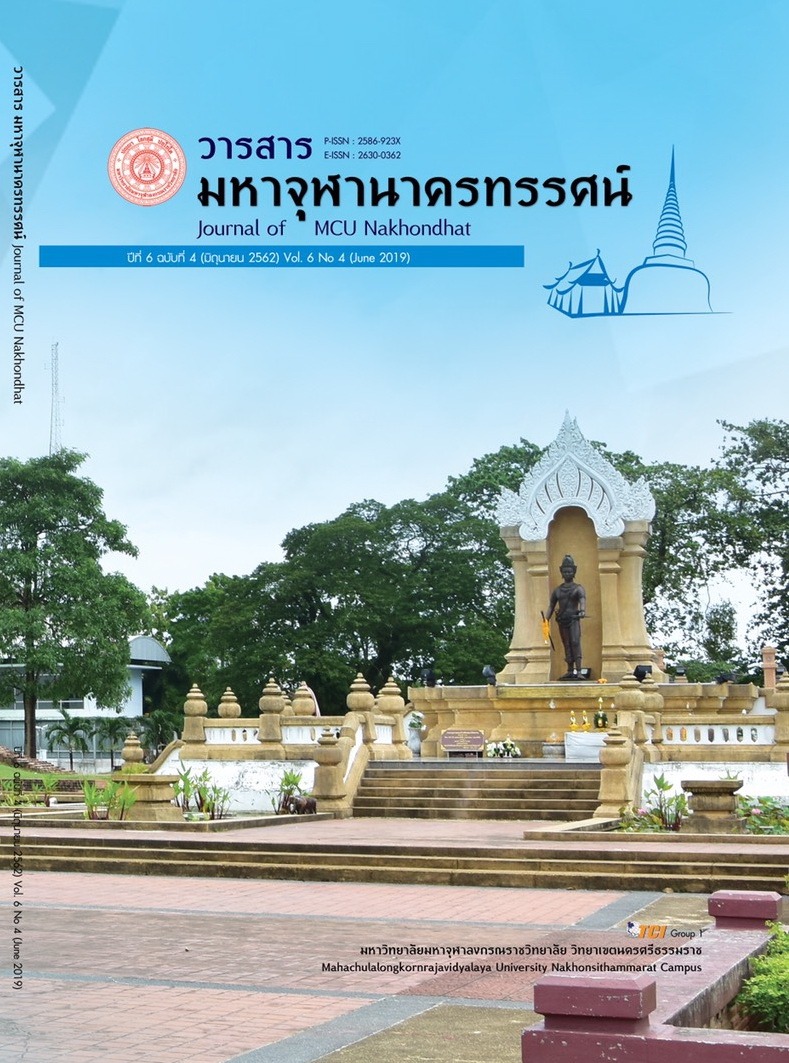RELIGIOUS IDENTITY: THE INTERPRETATION MODEL FOR PEACE IN ASEAN COMMUNITY
Main Article Content
Abstract
This research was “Religious identity: a model of meaning to create peace for the ASEAN community”. The objectives were to study the concept of practices religious identities. Focus on the process of religious meaning to analyze identity conflict human rights and religious meaning to create a peaceful understanding of the ASEAN community. This is a mixed method research of both documentary research and qualitative research. Connect knowledge about the concepts and principles that coexist in the ASEAN community along with Buddhism, Christianity, Islam and Hinduism. Study the policies and mechanisms for promoting coexistence of the ASEAN community. According to the religion and local wisdom of government organizations, religious organizations, religious leaders and people by in-depth interviews and random sampling. Informational group is religious leaders and professionals about 30 persons from 5 countries. To find characteristics and conclusions and group discussions, guidelines for development of forms and processes of religious meaning and discourse formation to create a peaceful understanding of the ASEAN community.
The study indicated that:
the meaning of the religious identity of that person or group was dynamic. There are social class and ideological structures. However, it must rely on "communication" through language, symbol system, communication channels are driven to form social relations in accordance with the structure of each religion. Identities in the communication area and public area are complicated because it was related to the relationship between religious groups. Therefore, to avoid identity conflicts both within the individual's own conflict and conflicts between individuals with different religious identities. It was essential that the multicultural society must have a common area. That accepts differences in religious identities in the context of society and must be a central area that allows different identities to be shared equally.
Article Details
References
คณาจารย์มหาวิทยาลัยมหาจุฬาลงกรณราชวิทยาลัย. (2552). วัฒนธรรมไทย. (พิมพ์ครั้งที่ 2). กรุงเทพมหานคร: มหาวิทยาลัยมหาจุฬาลงกรณราชวิทยาลัย.
ฉลาดชาย รมิตานนท์. (2545). แนวคิดในการศึกษาอัตลักษณ์ความเป็นไท. กรุงเทพมหานคร: มหาวิทยาลัยเทคโนโลยีพระจอมเกล้าธนบุรี.
ดิเรก กุลสิริสวัสดิ์. (2545). ความสัมพันธ์ของมุสลิมทางประวัติศาสตร์ และวรรณคดีไทย. กรุงเทพมหานคร: สำนักพิมพ์มติชน.
เดือน ดำดี. (2541). ศาสนศาสตร์. กรุงเทพมหานคร: มหาวิทยาลัยเกษตรศาสตร์.
ทัศนีย์ ช้อยกิตติพันธ์. (2016). บทบาทของพระธรรมโกศาจารย์ (พุทธทาสภิกขุ). สันติศึกษาปริทรรศน์ , 4(ฉบับพิเศษ),159.
พระพรหมคุณาภรณ์ (ป.อ.ปยุตฺโต). (2555). พุทธธรรม ฉบับปรับขยาย. (พิมพ์ครั้งที่ 32). กรุงเทพมหานคร: สำนักพิมพ์ผลิธัมม์.
พระมหาสุทิตย์ อาภากโร (อบอุ่น). (2548). เครือข่าย : ธรรมชาติ ความรู้ และการจัดการ. กรุงเทพมหานคร: โครงการเสริมสร้างการเรียนรู้เพื่อชุมชนเป็นสุข.


